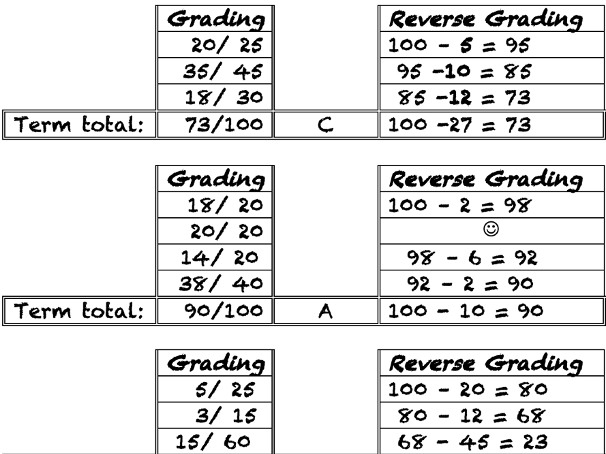
All’s fair in large-class grading
When courses have so many students that multiple tutors are required for marking, consistency with assessment grading is a key concern. Here, Temesgen Kifle offers ways to support tutors to give fair grades and feedback
You may also like
Popular resources
Large classes come with teaching advantages and challenges. On the upside, higher education institutions (HEIs) benefit from cost efficiency owing to economies of scale, while instructors experience more efficiency and broader reach. Students, in turn, enjoy the chance of diverse interactions.
However, HEIs must also contend with challenges related to resource allocation and logistics, while instructors may encounter obstacles in addressing diverse learning needs, fostering individual engagement, organising class activities, and delivering timely and effective feedback. Students may experience limited personalised attention and disconnection from the learning process.
Assessments are often marked with the help of multiple tutors, which leads to the primary difficulty for instructors teaching large classes: maintaining consistency in the grading process. The variation in different tutors’ assessment evaluations may stem from their subjective interpretation of grading criteria, unclear grading guidelines or differences in familiarity with the course and grading standards.
- How consensus grading can help build a generation of critical thinkers
- Effective assessment methods for large enrolment classes
- Online teachers need professional development, too
This article offers key strategies that can help instructors of large classes to preserve grading consistency when multiple tutors assess assignments and exams.
1. Provide training for new tutors
In my workplace, we organise training sessions for new tutors before they start tutoring duties. An objective of the session is to instruct tutors on accurately and consistently grading assessment items. If new tutors lack skills in marking, this poses a risk to the fairness of assessments and potentially results in biased grading. In the session, tutors are given past students’ exam responses, which they evaluate using a less detailed marking guide. Following this, they reassess the same papers using a more specific marking guide. This two-step process helps new tutors refine their assessment skills, align their judgements with established criteria and establish a consistent and accurate grading approach.
2. Provide tutors with clear marking guidelines or rubrics
Clear marking guidelines or rubrics are essential when tutors are grading assessments. An effective marking guide or rubric should, at a minimum, be clear (that is, straightforward and easy to understand), specific and relevant (aligned with the learning objectives). Without clear marking guidelines/rubrics from instructors, grading may be inconsistent if tutors interpret and apply assessment criteria in different ways. Some students may receive strict grades, while others are assessed more leniently, for example. Also, the absence of clear guidelines makes it challenging for tutors to offer constructive feedback to students about their performance, so students may find it difficult to improve.
3. Give tutors more detailed briefings related to the process of grading
Meetings that convey detailed briefings about the grading process play a crucial role in establishing an assessment system that is transparent and equitable. Providing tutors with this information goes beyond ensuring a consistent and fair evaluation process; it also aids tutors in comprehending the subtleties of expectations, enabling them to make well-informed decisions while marking. For instance, instructors ought to: guide tutors to avoid typical errors in the marking process; highlight the significance of offering constructive feedback to students; demonstrate previously assessed assessments to tutors; instruct tutors on managing uncertainties in marking criteria; and provide strategies for reducing subjectivity. Additionally, instructors should give explicit guidance to tutors, directing their attention to the questions they are assigned to evaluate, to minimise any potential halo effect. The halo effect, in this context, emerges when the evaluation of a specific section of an exam paper by one tutor influences the assessments made by another tutor assessing a different section or aspect of the same paper.
4. Ask tutors to mark sample papers
The course instructor should ask tutors to mark a sample of papers and then meet with them to ensure their marking aligns with the guidelines. This quality-assurance practice ensures objectivity and consistency in the marking process. Additionally, it provides tutors with an opportunity to receive constructive feedback and make adjustments to their marking, if necessary.
5. Encourage regular communication among tutors during the grading process
Effective communication among tutors working with a large cohort is crucial when grading assessments. This ensures grading standards and criteria are applied consistently, and ideally minimises grading discrepancies. Additionally, sharing insights and perspectives among tutors enhances their overall understanding of students’ performance, making it easier to provide feedback. In the courses I teach with a large class size, I strongly encourage tutors to establish a shared account. This can be a platform to exchange insights into grading methods, and it provides a forum to address challenges during the assessment evaluation process.
6. Ask tutors to blind-mark and then compare their assessments
As a form of moderation calibration, instructors should instruct tutors to independently mark the same sample set of assessments without knowing each other’s evaluations. The course instructor can then compare the results and tell tutors the calibration outcome to improve marking consistency. This process is known as double marking and can be used as a test of inter-rater reliability.
7. Ask students for feedback on their grades
Although gathering such feedback can be challenging in large classes, the effort to seek students’ input on their assessment grades is a powerful way to improve grading practices. It provides a valuable opportunity to maintain fairness and equity in the evaluation of students’ academic performance, serving as a means of quality control. The best way to do this is to randomly survey a subset of students who have finished the assessment items.
8. Make the marking workload reasonable
Tutors often juggle their roles as students with exams and assignments, so instructors must assign a reasonable marking workload. If tutors are overwhelmed, stressed or tired, it can lead to grading inconsistency and mistakes, and potentially affect the tutors’ own academic performance. When tutors assess assessments while they are fatigued, consequences can also include lower feedback quality.
In large class settings, when assessments are commonly evaluated by several tutors, grading discrepancies can be an issue. To uphold consistency, instructors teaching large classes need to explore diverse strategies to assist tutors in providing clear and fair grading.
Temesgen Kifle is a lecturer in the School of Economics at the University of Queensland.
If you would like advice and insight from academics and university staff delivered direct to your inbox each week, sign up for the Campus newsletter.




